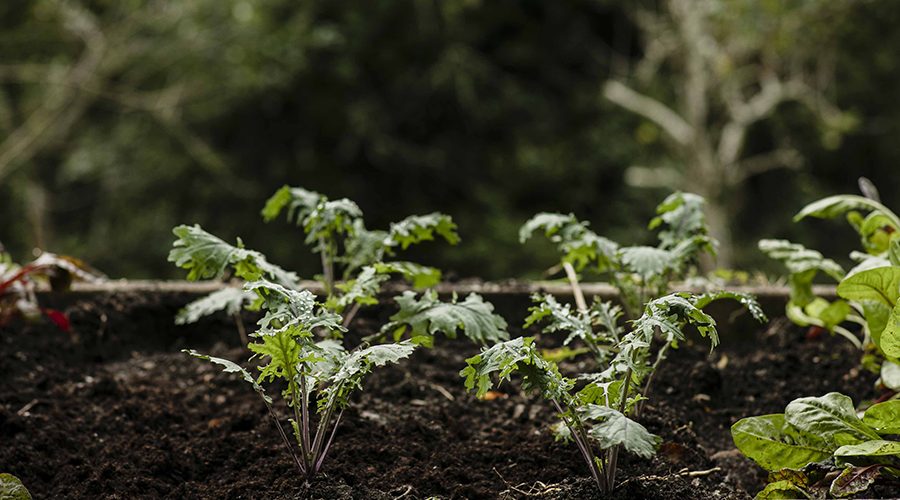Planting up in September or October will keep your veg patch productive, giving you a home harvest right through till next spring. Growing in autumn requires less work and attention, and is well worth it for the supply of healthy greens over the colder months!
Below is an FAQs guide to planting and growing in autumn.
What can I grow?
SALAD LEAVES: Salad lovers can enjoy tasty Mustard Leaves, Mizuna, Wild Rocket and Winter Lettuce varieties that are all suitable for the colder months. There’s also a fun range of other leaves that are great for winter salads, like Landcress (which has a similar flavour to watercress), Winter Purslane (a small leaf with spinach like flavour) and Corn Salad.
PERFECT FOR STIR FRIES: Pak Choi and Tatsoi are great to grow during the colder months as it is their natural ‘leafy’ season and they are less likely to bolt as they so often do in the summer months. You can plant Spring Onions in autumn for a late winter/early spring harvest.
HEALTHY GREENS: Kale, Chard and Spinach grow well over autumn and winter, and you should get plenty of leaves from them if using as a cut and come again. Winter Greens and Spring Greens can be grown for harvesting whole and you can plant Sprouting Broccoli varieties for spring cropping.
ROOTS: You can grow turnips and swede in autumn, and they’ll provide you with a crop in late winter/early spring.
When can I plant?
September and October are the main months for autumn planting. We’ll be despatching from early September until mid/late October when the weather usually starts to get a bit cooler.
Will it take up lots of time?
Plants actually don’t need very much attention over autumn and winter, as pests and weeds are fewer and rain is more frequent! This makes it a bit easier for those who are off at work most of the week and unable to tend to their plots during the week, as you’ll only need to spend an hour or so in the veg patch at weekends.
What you will need to allow for is a bit of time when you are planting as this can take a few hours, especially if you are putting up any netting or fleece tunnels (more on that in a moment). You will massively reduce the amount of time needed by applying a mulch at planting time as this will help to keep weeds, pests and disease under control.
Other than that you’ll probably find that you can get away with doing very little other than popping down slug traps, checking that plants are ok from time to time and harvesting things as and when you want to eat them. We find we may spend an hour or two in the veg patch at weekends, but not necessarily every week.
How do I care for my veg plants?
At planting time:
- Add a 5cm layer of mulch, ideally organic compost before planting as this will help to keep weeds down, will improve the quality of the soil and will help to keep the roots of the plant protected from frost/snow.
- Net cabbages, kales and broccoli to protect them against pigeons and cabbage whites.
- Protect tender crops with horticultural fleece tunnels (or grow them in a greenhouse if possible) – winter lettuces
- Put down slug traps/prevention – beer traps work well, wool pellets, grit etc
Ongoing care:
- Unless you are growing things under cover (in a polytunnel/greenhouse etc) you probably won’t need to water them.
- Lay horticultural fleece over rows of veg or move pots under cover during frosty/snowy weather.
- Keep on top of slugs.
- Check the plot for wind/rain damage and keep it clear of debris (fallen leaves/branches etc)
Can I grow in pots?
Absolutely! Growing in pots is actually a really good way of growing your own over autumn and winter as you can move them in and out of shelter as required, and it can be a bit easier to keep slugs at bay. You can grow any of the autumn/winter crops in pots, containers and grow bags so just go for it!
When will I be able to harvest?
Obviously this will depend on the weather and will be affected by cold spells, but as a general idea you could expect the following:
Most of the leafy veg will be able to be harvested as cut & come again throughout the season, from November onwards, particularly if you’re growing under cover or are in a milder part of the country. You’ll find that growth slows as the temperature drops and the days get shorter. Winter greens should reach maturity in December/January, whilst Spring Greens and Spring Onions will be more like February/March. Broccoli should start sprouting in early spring, hopefully the end of March/early April.

